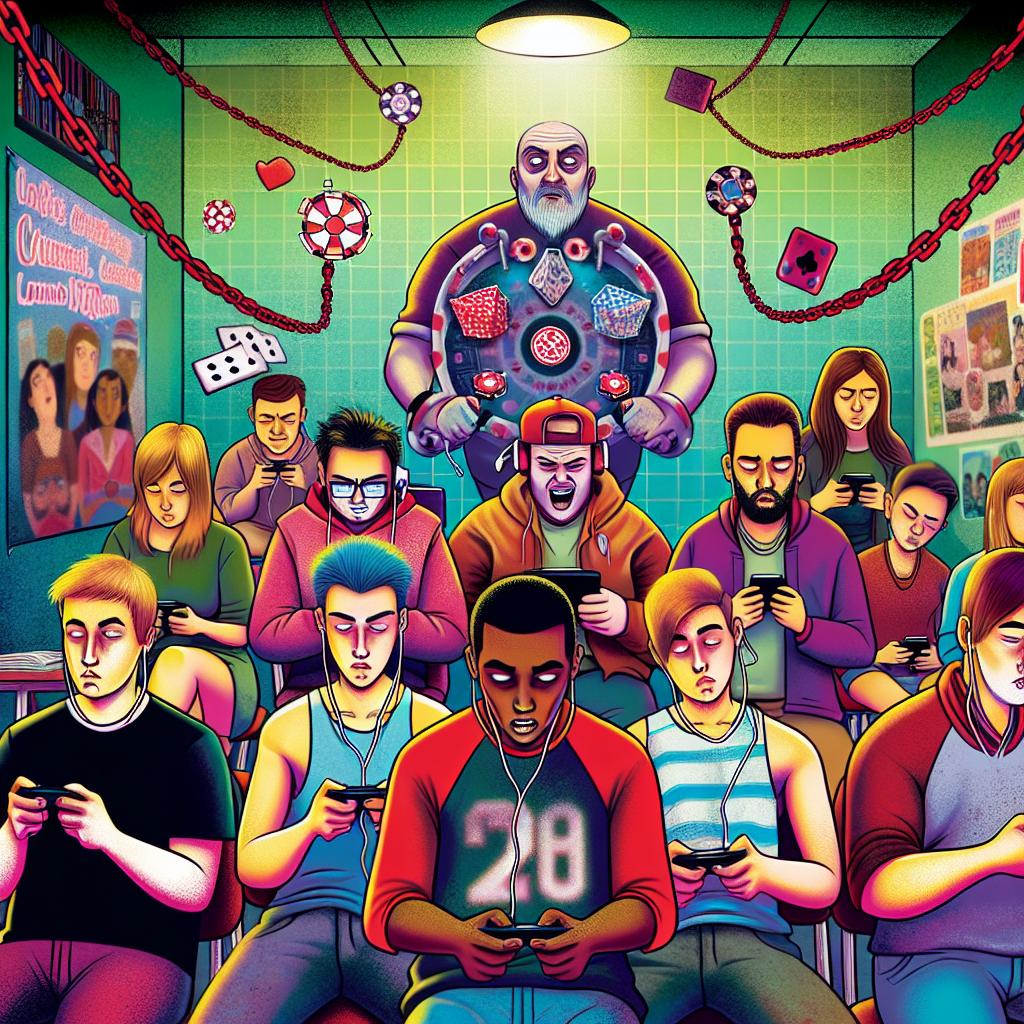The Prevalence of Gaming Among College Students
In recent times, the integration of gaming into the daily routines of college students has been notably increasing. This trend is not surprising given the concurrent growth of the gaming industry, which continues to spread its influence across numerous platforms, from consoles and computers to smartphones and tablets. As a primary source of entertainment, many students now dedicate substantial portions of their free time to video games.
The evolution of gaming technology, including innovations in graphics, gameplay mechanics, and social features, has made gaming a more engaging and immersive experience. Consequently, the boundary between a casual pastime and an immersive hobby can easily blur, leading some students to invest more time in gaming than anticipated.
Understanding Gaming Addiction
The concept of gaming addiction, often referred to as Internet Gaming Disorder, requires a nuanced understanding due to its complexity. Characterized by the excessive and compulsive use of video games, this condition can disrupt a person’s ability to carry out daily activities effectively. The American Psychiatric Association’s DSM-5 has highlighted the need for further investigation into this disorder, acknowledging the potential for it to develop into a recognized mental health condition.
Signs of Gaming Addiction
Identifying signs of gaming addiction is pivotal in addressing its impacts. Some indicative patterns include:
– Individuals may start to prioritize gaming over other essential activities such as study, work, or physical health, thereby impacting their broader life goals.
– Students might display an inclination to continue gaming despite negative consequences, such as deteriorating academic performance or strained relationships.
– Gamers may also develop a need to increase game time or the intensity of gameplay to achieve the same levels of satisfaction they once did with less effort.
Understanding these signs can play a crucial role in early detection and intervention, which is crucial for mitigating long-term consequences.
Impact on Academic Performance
The consequences of gaming addiction are particularly significant in an academic context. College students who are excessively engaged in gaming might witness a tangible decline in their scholarly pursuits. There is a potential correlation between gaming addiction and dwindling academic performance, which can manifest through poor class attendance and lower grades. In more severe cases, persistent gaming addiction could even elevate the risk of students dropping out. For a detailed examination of such academic impacts, this study from the National Center for Biotechnology Information (NCBI) presents substantial evidence.
Social Implications
Beyond academics, gaming addiction can significantly affect social interactions. Students might choose the virtual world of gaming over real-life social gatherings, leading them to isolate themselves and decline opportunities to engage in physical social environments. This can hinder the development of crucial social skills and erode existing personal relationships, making it challenging for students to communicate and interact effectively outside of the gaming context.
Possible Solutions
Addressing the issue of gaming addiction among college students requires employing multifaceted strategies aimed at promoting healthier habits and relationships with gaming.
Time Management and Self-Regulation
One of the critical methods to alleviate excessive gaming is encouraging effective time management and self-regulation among students. By adhering to a structured schedule that allots specific time blocks for academics, leisure, and necessary rest, students can better control gaming habits. It’s essential to instill an understanding that while gaming can be an enjoyable activity, it should not overshadow other vital life responsibilities.
Support Systems
Universities can play a significant role by providing robust support systems aimed at assisting students in need. Counseling services, workshops, and educational programs can be instrumental in unveiling the impact of gaming culture on students. Such initiatives can help students gain insights into their gaming habits and foster healthier interactions. This approach is further explored in detail in a research article by a notable educational institution, available here.
Conclusion
While the popularity of gaming among college students is undeniable, it is essential to recognize that when not monitored, it can lead to adverse effects, including addiction. This can impact both academic and social aspects of student life. By acknowledging the severity and signs of gaming addiction, along with implementing effective strategies such as time management and creating support systems, colleges can aid in fostering a balanced environment. This will enable students to enjoy gaming without it impeding other crucial areas of life, thereby promoting a well-rounded college experience.

